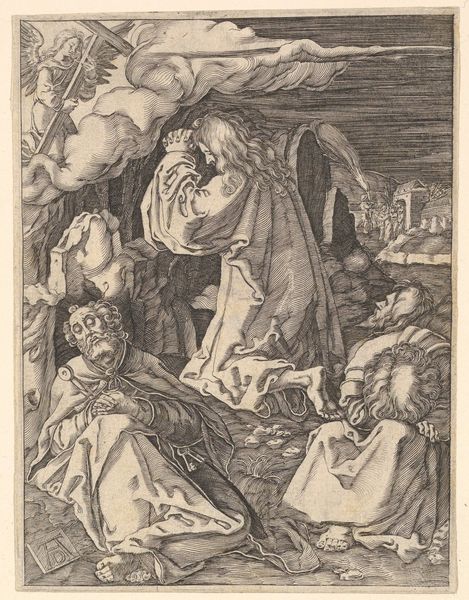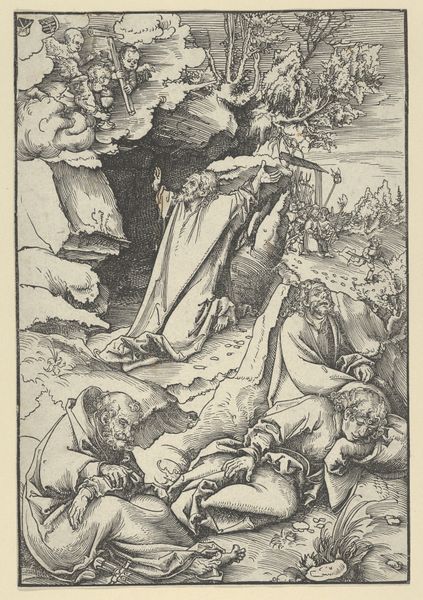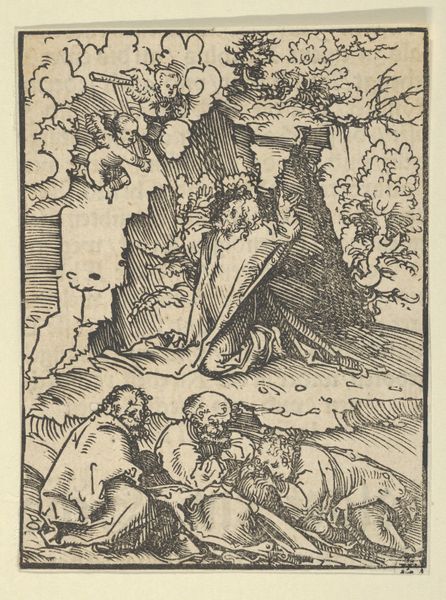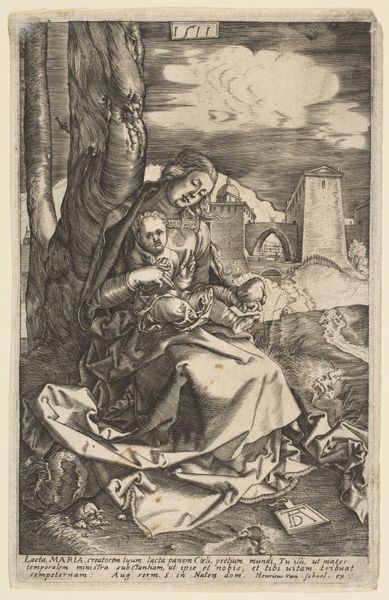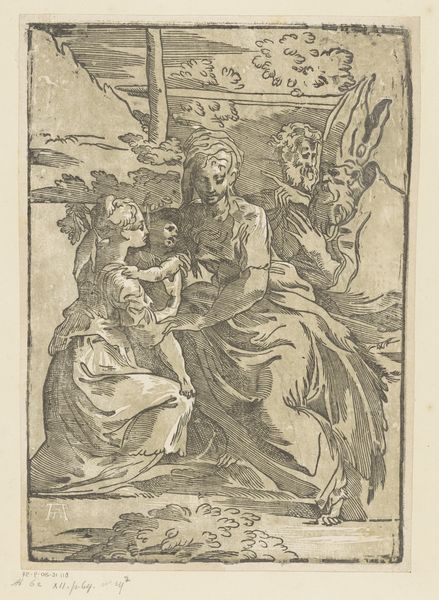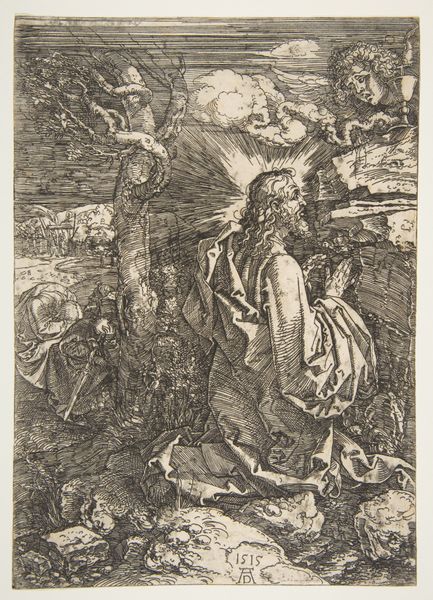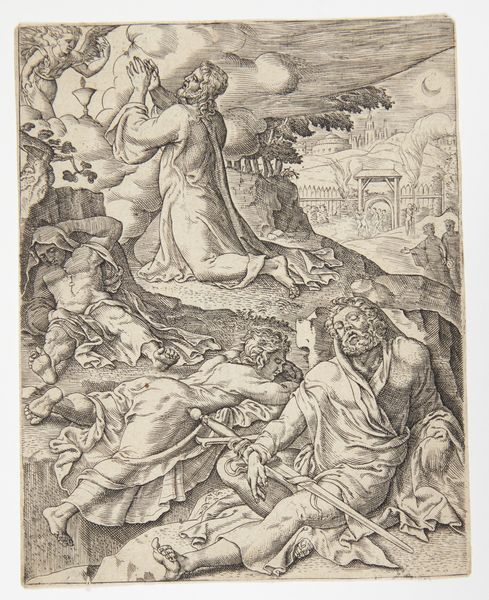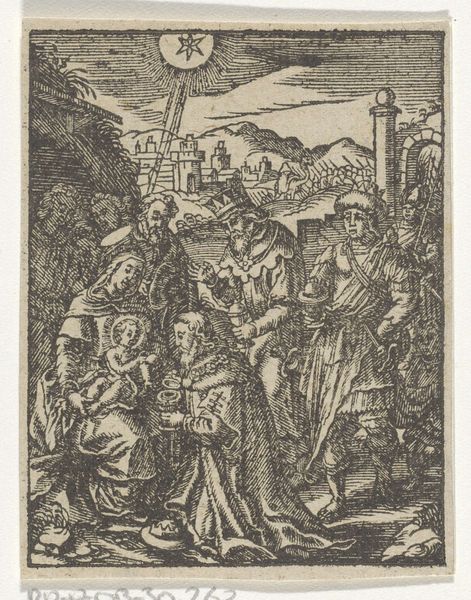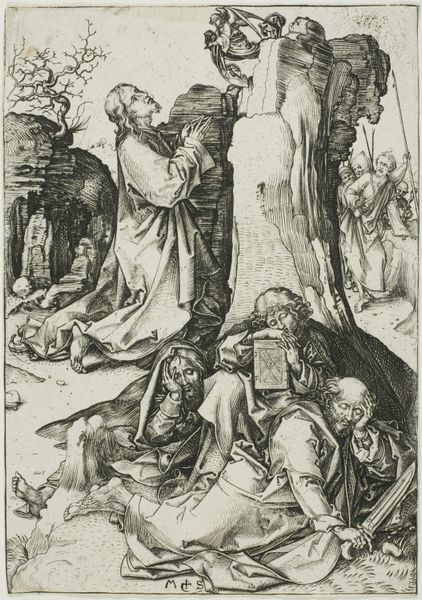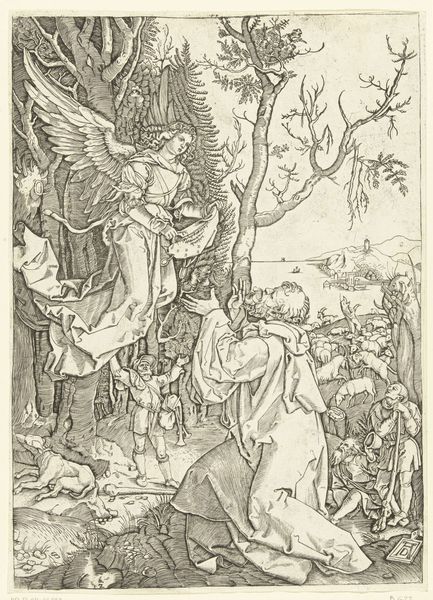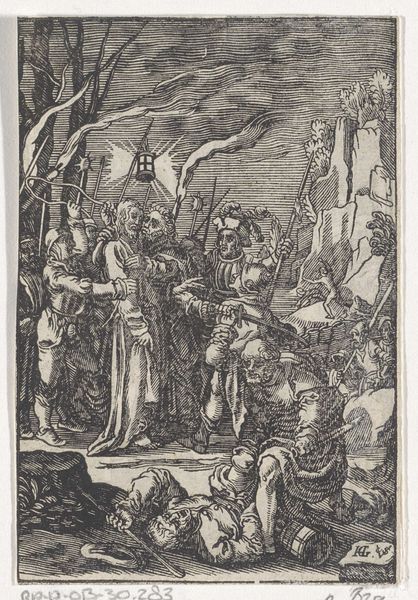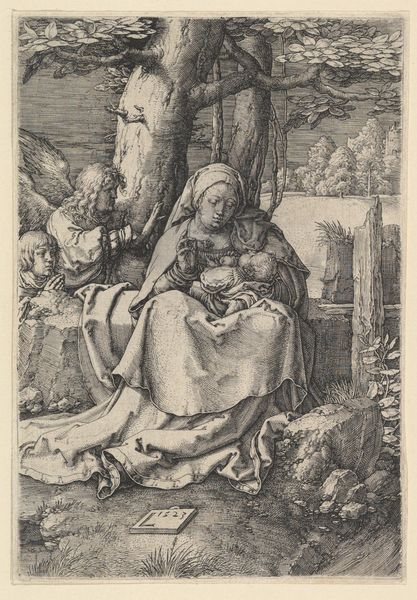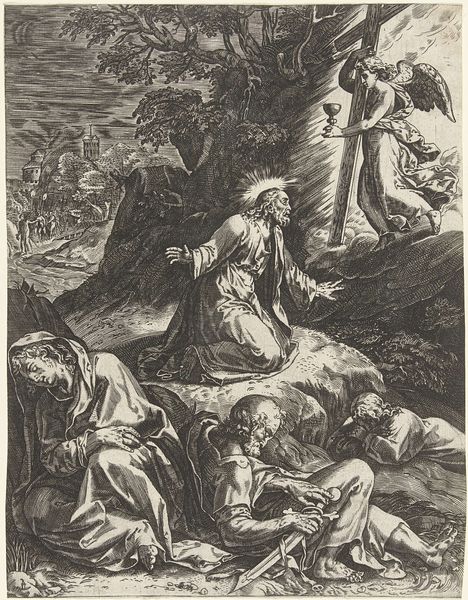
Christ praying on Mount of Olives; Roman soldiers entering through garden gate in far background, after Dürer 1495 - 1539
0:00
0:00
drawing, print, engraving
#
drawing
#
pen drawing
# print
#
figuration
#
cross
#
soldier
#
men
#
history-painting
#
italian-renaissance
#
engraving
#
angel
#
christ
Dimensions: Sheet: 5 1/8 in. × 4 in. (13 × 10.1 cm)
Copyright: Public Domain
Editor: This engraving, "Christ Praying on the Mount of Olives, after Dürer," attributed to Marcantonio Raimondi, probably from the early 16th century, presents a densely detailed scene. It feels heavy, laden with impending doom. What resonates most strongly with you in this piece? Curator: The power of this image, even centuries later, stems from its complex visual encoding of memory and prophecy. Notice the angel appearing to Christ, bearing the cross – a powerful symbol not just of the coming crucifixion, but of sacrifice and redemption, visually linking Christ’s present agony with the future. It evokes the cultural memory of the Passion. Editor: So, the symbols are working on multiple levels. Is there something about the background, or setting, that would also trigger such powerful, long-lasting emotions? Curator: Precisely! The sleeping disciples and the approaching soldiers through the garden gate. Dürer and, by extension, Raimondi are reminding the viewer of betrayal and human fallibility. Look closely - how does the artist convey a sense of emotional weight through the rendering of the figures themselves? Editor: Well, Christ is kneeling, his hands clasped in prayer; he seems to be looking upwards as though pleading, and there's an agony etched on his face. The disciples are slumped over. It is like everyone knows something bad is about to happen. Curator: Exactly. And in a world of turmoil and uncertainty, these images of suffering and solace likely served as both warnings and affirmations. Raimondi wasn't just replicating Dürer; he was also ensuring the endurance and evolution of a vital visual vocabulary. What do you think viewers back then felt when they encountered it? Editor: I now feel I'm only just starting to understand what it meant to encounter such a picture. It would be a stark reminder of both faith and the ever-present potential for human failing. Curator: Indeed, the enduring power of symbols lies in their ability to continuously be re-interpreted and re-experienced.
Comments
No comments
Be the first to comment and join the conversation on the ultimate creative platform.
